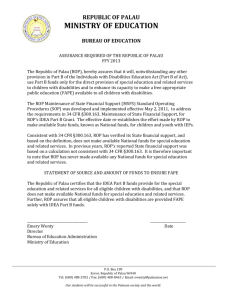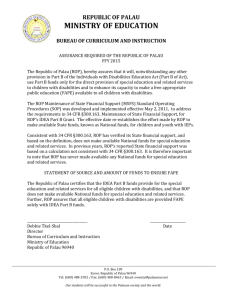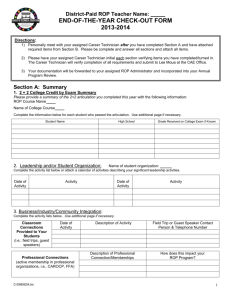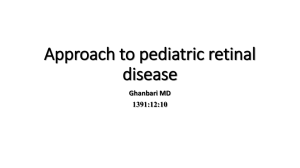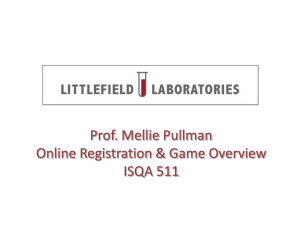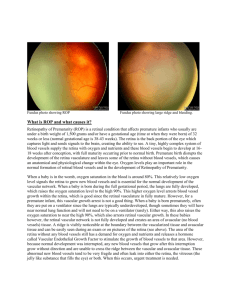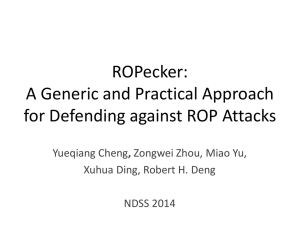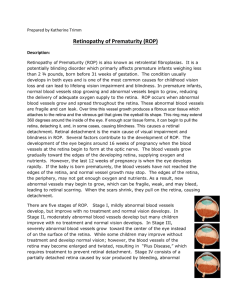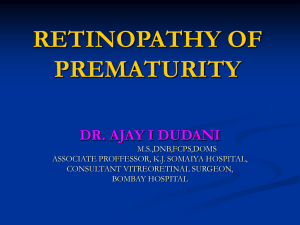Retinopathy of Prematurity: US and Global Challenges
advertisement
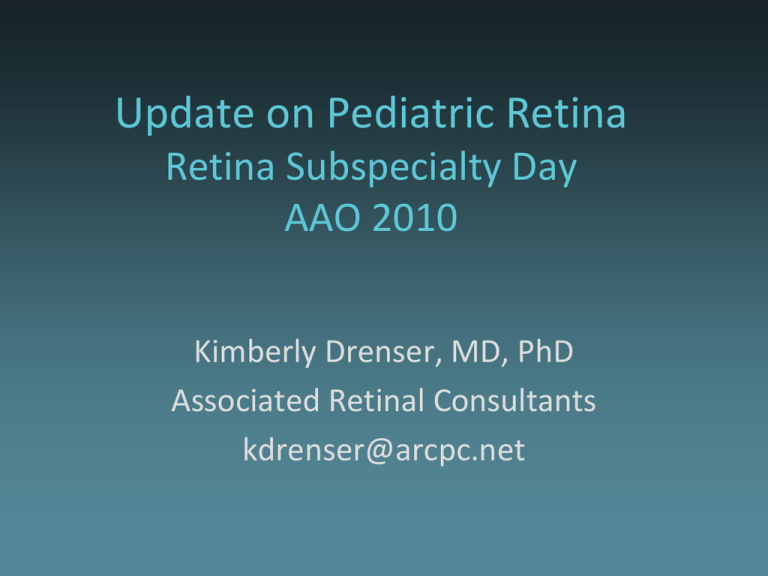
Update on Pediatric Retina Retina Subspecialty Day AAO 2010 Kimberly Drenser, MD, PhD Associated Retinal Consultants kdrenser@arcpc.net Financial Disclosures Retinal Innovations, O; FocusROP, O; Retinal Soultions, O Current Issues ROP remains the leading cause of blindness in infants Untreated threshold ROP = 50% blindness Treatment reduces blindness <1% Incidence of ROP in the US Unchanged over last 20 years See increased survival of infants <26 weeks Increased number of Zone 1 disease Requires more diligent screening and early intervention Incidence of ROP in other countries Intermediate Development Highest increase in the incidence of ROP Improved survival of premature infants with variable/poor neonatal care 3rd World Low incidence of ROP Poor survival of premature infants ROP Care - The State of the Art With current ROP care techniques the theoretical failure rate for ROP is about 1% These results are based on… These Results Are Based On: ROP requiring laser ROP requiring VTX ROP Care - The State of the Art The actual success rate in ROP management is nowhere near 99% Infants are still going blind who should not Reason: in the US we are facing an epidemic of poor ROP care Prevention of ROP: Dr. Sears Relative hypoxia is normal in utero Strict monitoring of O2 Sats 85%-92% Until PMA 34 weeks Statistically significant decrease in ROP Hypoxia-Mimetics Hypoxia Inducible Factor (HIF) Promotes vascular growth Dimethyl Oxyl Glutamate (DMOG) HIF mimetic Oxygen induced retinopathy model demonstrates decreased retinopathy Prevention of ROP: Dr. Drenser Wnt signaling and Norrin in treatment of retinal disease ANGIOGENESIS NDP * LRP Fzd4 ABERRANT ANGIOGENESIS CAMK2 PKC -CATENIN Can Norrin Rescue Retinopathy Standard OIR mouse model (p5-p12) Intravitreal injection at p14 Sacrificed at p17 Norrin Treated Untreated Fellow Eye The Challenge How can we do better for infants and their families? We need a more effective safety net Telemedecine for ROP was presented by Drs. Trese and Vinekar How Would Digital Imaging Help? Training Vigilance Longitudinal Viewing Second opinion Why Move To Image-Based Screening? Which image is better? Safety Net Components 1 Hospital infrastructure 2 Expertise 3 Image management software 4 Parent education/participation in care Ideal ROP Software Internet features Secure Rapid return of report within 12 hours Printable or seamless electronic record entry Instantly access to “experts” as needed Education about ROP (free) FocusROPTM Homepage RIGHT EYE LEFT EYE Benefit for the Baby Examination image available to Ophthalmologist Neonatologist and NICU nurses Parents Demands explanation and action in regard to interval changes in fundus Improves parent understanding/participation

